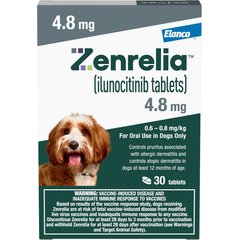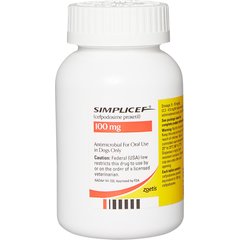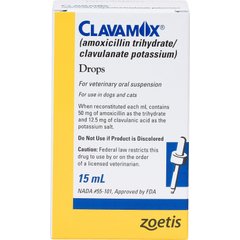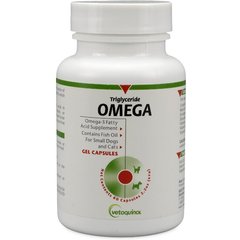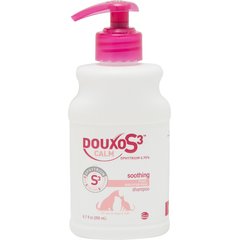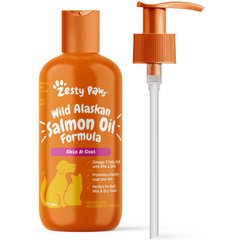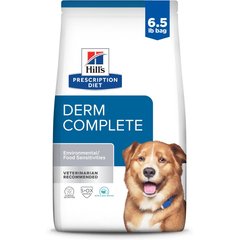Contact Dermatitis in Dogs: Common Causes and How To Help Your Pet
Celine Druguet/iStock / Getty Images Plus via Getty Images
Contact dermatitis in dogs is characterized by a skin reaction that occurs after prolonged contact with an irritant known as an allergen.
These allergens are typically protein molecules (from fabrics, plants, or other substances) that trigger an immune response—including the production of antibodies—that leads to symptoms like itching, redness, crusting, and pustules on the skin.
Key Takeaways
- Contact dermatitis is caused by an allergic skin reaction.
- The most common symptoms include itching, redness, crusting, and other skin-related issues.
- It typically occurs in areas with less fur, including the muzzle and armpits.
What Is Contact Dermatitis in Dogs?
Contact dermatitis is a relatively uncommon skin condition in dogs, primarily because of the protective barrier provided by their fur coat.
As a result, most symptoms develop on the parts of the dog’s body that have no hair or sparse hair and include:
-
The muzzle
-
Around the eyes
-
Armpits
-
A dog's pressure points (elbows, ankles)
-
Belly
-
Groin
-
Scrotum
-
Rear end
-
Paws
Some of the most common substances that can trigger contact dermatitis in dogs are:
-
Plants
-
Mulch
-
Rugs and carpet
-
Fabrics
-
Plastics
-
Concrete
-
Medications
-
Chemicals
-
Fertilizers
While localized skin irritation in dogs is not considered a medical emergency, there is still a risk that open sores may become infected, symptoms will get worse, and your dog will generally be uncomfortable due to persistent itchiness and scratching.
If you suspect your dog has skin allergies that are causing contact dermatitis, take them to your veterinarian.
Symptoms of Contact Dermatitis in Dogs
The symptoms of contact dermatitis will often come and go depending on the duration and timing of contact with the allergen. Common symptoms include:
-
Red and inflamed skin
-
Hardened scales, flakes, and scabs
-
Pustules or pimples
-
Itchiness and scratching
Causes of Contact Dermatitis in Dogs
Contact dermatitis is caused by an allergic reaction that occurs when your dog’s skin encounters an allergen.
This contact triggers a local immune response in which your dog’s immune system identifies the allergen as a threat, even if it’s harmless.
Instead of ignoring the substance, the dog’s immune system produces antibodies to fight off the “invader.” In turn, these antibodies trigger inflammation and symptoms.
Prior sensitization is necessary for this reaction to occur. This means your dog is encountering the allergen on a regular basis. Sensitization usually takes about six months to two years to develop. Once it occurs, subsequent exposure to the same allergen will trigger an allergic reaction.
Contact dermatitis can affect dogs of any breed, gender, and age, provided that the dog is older than six months. Dogs who already have allergies may experience more severe or frequent flare-ups.
How Veterinarians Diagnose Contact Dermatitis in Dogs
Typically, the distribution of skin lesions on contact surfaces such as the face, paws, belly, and rear end are often enough to raise suspicion that your dog has contact dermatitis.
If testing is needed to determine the allergen, the most common type is patch testing.
This process typically involves shaving the hair on your dog’s side—usually a couple of days beforehand—and applying small amounts of the suspected allergen (such as plant material) directly to the skin. Any resulting response (with symptoms like those described above) is noted by your vet within a few days after the application.
Contact dermatitis can be managed at home, but due to the level of skin disease and itching involved, your dog may require prescription-strength medication.
Alternatively, your vet may recommend avoiding a suspected allergen for about a week, followed by a “rechallenge.”
During the rechallenge, your dog will be exposed to the suspected allergen again to see if it triggers a response.
Because dogs with other types of skin disease usually have similar symptoms, your veterinarian may recommend additional tests, such as:
-
A skin impression
-
Skin scraping
-
Fungal testing (including a Wood’s lamp examination, fungal culture, or fungal PCR) to check for evidence of bacterial or yeast infections, mites, or ringworm.
A biopsy may be needed to rule out more serious skin conditions like pemphigus or cancer.
In complex or persistent cases, a consultation with a veterinary dermatologist may be required.
Treatment of Contact Dermatitis in Dogs
For dogs with active symptoms, your vet may prescribe medications to help control the itching.
Introduced in late 2024, Zenrelia is a prescription medication that was created to control itching with a single daily pill. This medication offers rapid relief and can be used for as long as your dog has symptoms.
Depending on your individual pup, your vet may recommend other prescriptions, like Apoquel or Cytopoint.
If a secondary bacterial or yeast infection is present, treatment typically involves antibiotic or antifungal medications.
Often, antibiotic medications such as cephalexin, Simplicef, or Clavamox are used alongside anti-fungal medications like fluconazole or miconazole.
Topical therapies—including ointments, shampoos, and conditioners containing antibacterial, antifungal, and/or steroidal properties—may also be prescribed.
Bathe your dog under the guidance of your veterinarian. This can lessen your dog’s symptoms and make your pup more comfortable and feel less itchy.
Your vet may also recommend using medicated or hypoallergenic shampoos.
They may also recommend products with omega-3 fatty acids, which support a healthy skin and coat:
-
Vetoquinol Triglyceride OMEGA Omega-3 Fatty Acid Supplement for Cats & Dogs
-
Supplements, such as Zesty Paws Wild Alaskan Salmon Oil for Dogs
Additionally, specialized diets designed to strengthen the skin barrier, soothe, and nourish a dog’s skin, and support their immune system—such as Hill’s Derm Complete—could be helpful.
Consult with your veterinarian to determine the best topicals, supplements, and diet for your dog, considering their unique medical and nutritional needs.
Recovery and Management of Contact Dermatitis in Dogs
The prognosis for dogs suffering from contact dermatitis is often good if the allergen is identified and avoided.
In some cases, dogs may need lifelong medication—such as pentoxifylline or cyclosporine—to reduce their sensitivity.
Prevention of Contact Dermatitis in Dogs
Contact dermatitis can be challenging to treat. Prevention is the best way to help your dog avoid uncomfortable symptoms.
Avoiding contact with the allergen whenever possible is key, which may involve measures such as:
-
Removing carpeted areas or rugs
-
Removing plants and weeds
-
Using HEPA filters
-
Changing your dog's water or food bowl
Barrier methods like recovery cones or T-shirts—as well as more frequent bathing with or without leave-in shampoos and conditioners—may be helpful.
Contact Dermatitis in Dogs FAQs
How long does contact dermatitis last in dogs?
Symptoms usually appear within 24-48 hours of contact and can resolve in about seven to 10 days if the irritant is avoided.
Can you treat a dog’s contact dermatitis at home?
Contact dermatitis can be managed at home, but due to the level of skin disease and itching involved, your dog may require prescription-strength medication.
Sometimes, if symptoms are mild, just removing the offending allergen by bathing your dog with a hypoallergenic shampoo can significantly improve their condition.


